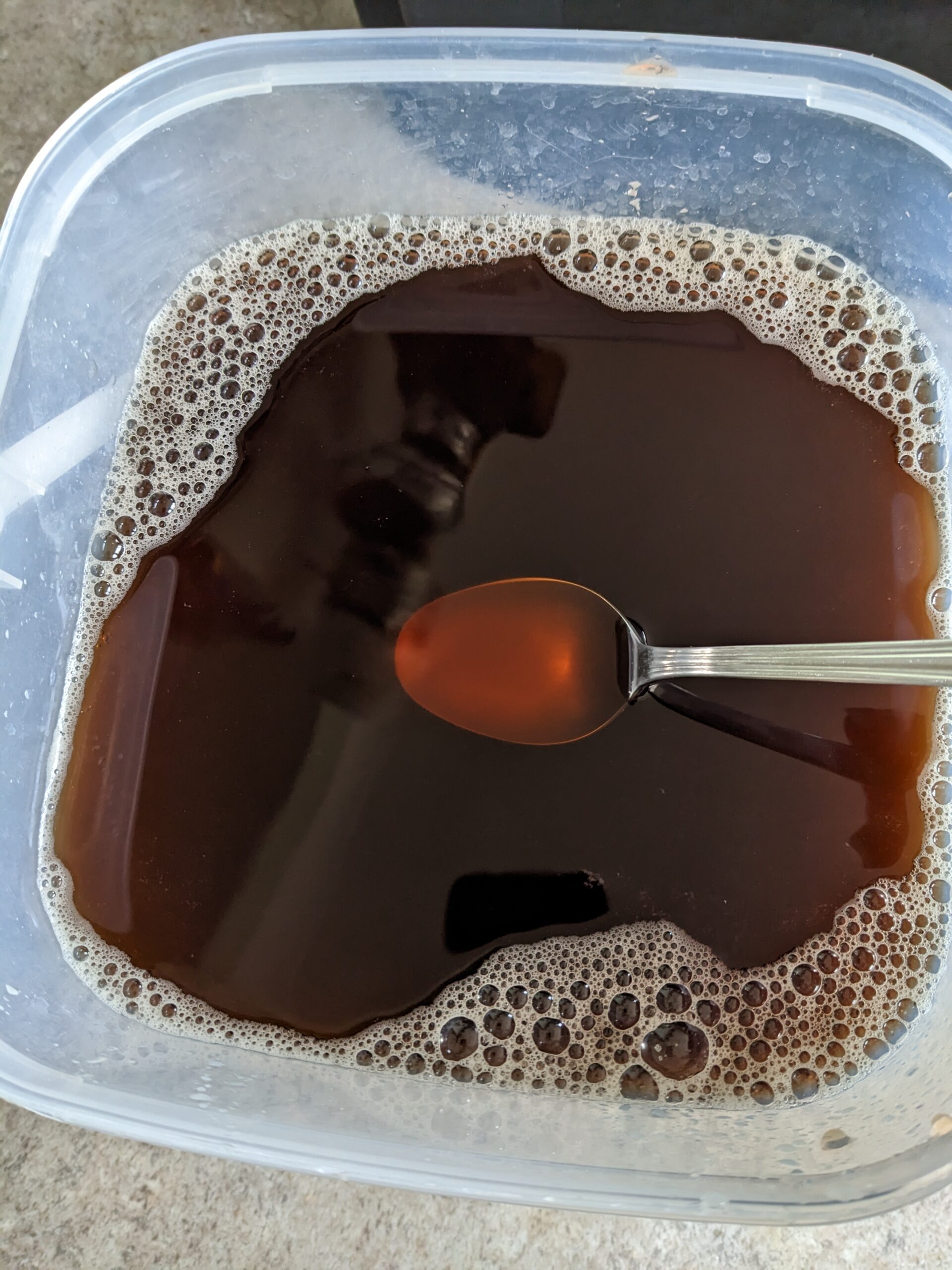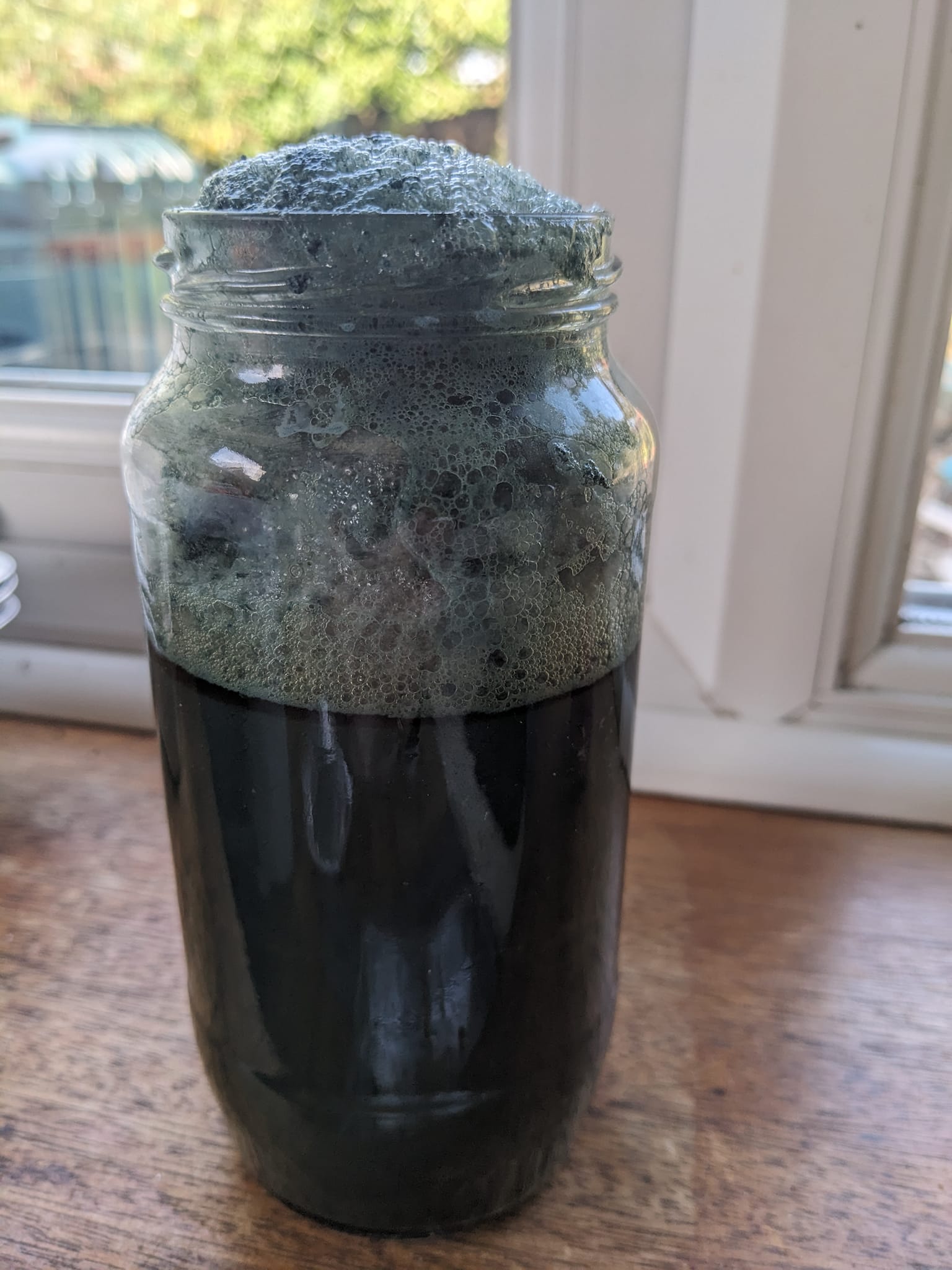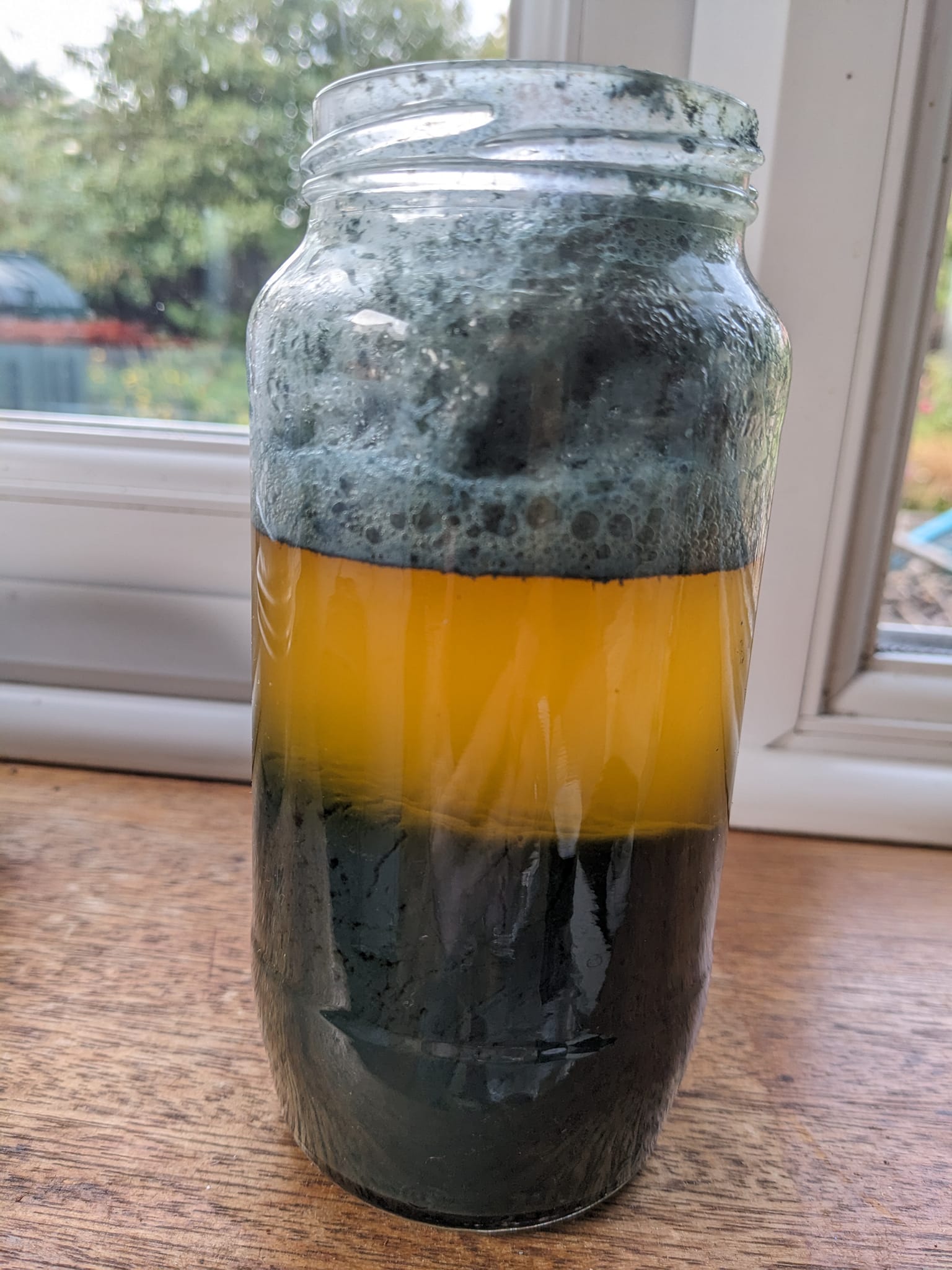I’ve experimented with a different way of extracting pigment from homegrown fresh woad (Isatis tinctoria) leaves. What follows is not my own idea as I’ve been reading about it elsewhere but thought I would try it for myself. I’m not going into the scientific explanations here but I will link to various places where you can gain more information should you wish.
 | I harvested the last of my woad crop in early October 2023. It was a very good year and I managed at least six previous harvests from it. |
 | Instead of my usual method of steeping the leaves in hot water for 6 – 12 hours after picking, I froze them first for around 24 hours. After removing them from the freezer I crushed them (extremely easy to do whilst still in their frozen state). I then poured very hot, almost boiling, water on them and let them steep for 15 – 20 minutes. It was then strained to remove the solids and the liquid (now very red) was vigorously aerated with a hand blender for about 6 mins or more. Only then did I add a solution of calcium hydroxide and brought the pH up to around a 9 or 10 and aerated again. The pH wasn’t crucial at this stage as I was only using the calcium hydroxide as a flocculant to settle the particles, you could equally use alum for this. |
 The frozen leaves during soaking. |   The pigment slowly settling out. |
There was lots of blue foam, which was promising. I let it settle over night and then syphoned off the liquid, still very red…..redder than anything I’ve seen before! As it was so red I decided to dye with it. Not for blue, as this was now in my settling jar, but for pink.
 |  |
| During the dye process | The final result. Salmon pink wool and a lot of blue sludge |
Results: I’m very impressed with how this turned out and will use this method again. The ‘pink’ is looking as good as a madder exhaust bath and the amount of pigment produced has practically doubled. The jar in the photo is 500ml and when the pigment had dried out there was 8 grams of powder from less than a kilo of leaves. The theory was that this method would produce more pigment than the ‘normal’ soaking method and in this case it certainly has. I would normally use a kilo of leaves and get maybe 4 grams of powder. So why does this happen? A very complicated interaction between extreme temperature differences acting on the chemical compounds in the woad resulting in fewer side products and more indigotin. So more efficient conversion results in fewer losses and more yield. Well that’s the theory anyway. Maybe food for another experiment and more research soon!
Useful Links
Michel Garcia – Well worth looking at his Youtube. He does amazing things!
Growing Chinese Woad – Isatis indigotica –
Indigo Pigment Extraction Methods – a private Facebook group mainly for Indigo but does include some processes for woad.
How to Extract Woad Dye in 12 stages
Indigo from Woad – Natures Rainbow
